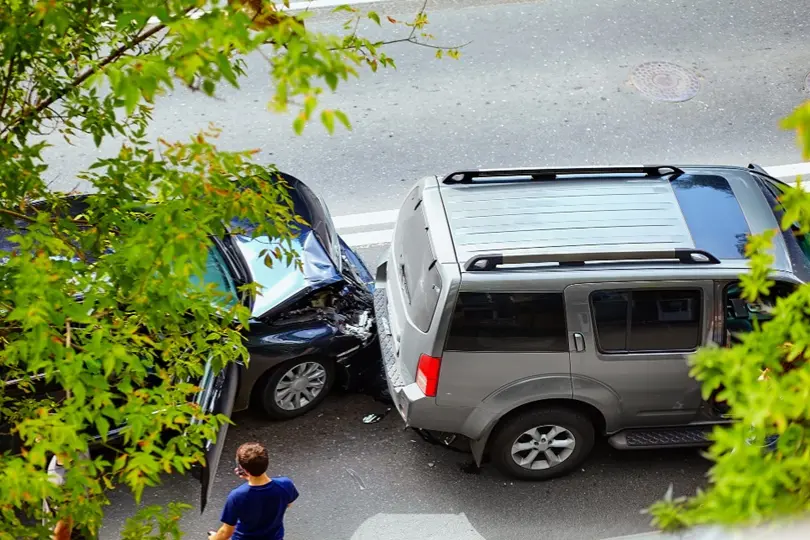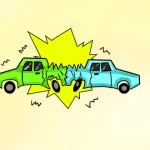
When summer comes, you and many other people are more likely to be on the roads, particularly on vacation days. Everyone enjoys the hot weather, however there are dangers that may take you by surprise. When you are traveling, you cannot afford to be naive and be conscious of what can jeopardize your family and yourself. This development of awareness is the basis of safer driving practices. These dangers are further compounded by the influx of traffic along the road, which in tourist-filled regions, may result in something severe. However, you need not worry, as the understanding of these risks, along with a routine check, can make summer driving a safe experience.
Before you hit the road, here are five key reasons accidents increase in summer—and practical tips to stay safe behind the wheel.
1. Vehicle Failures Due to Extreme Heat
High summer temperatures usually mean overheating and tire issues for most. With the increase in pavement temperature, your tires could blow out, creating an emergency instantly. Your engine could also reach temperature levels that will make it stall, which means additional repair time and increased costs. The hot weather quickly increases the temperature of tires and engines, and if you have not made any preparations, your car might let you down at the least expected time. Also, low levels of fluids and worn batteries are common in cars with a lack of frequent service. Frequent vehicle checks and tire checks before your trip do not have to take a lot of time, and these will save your expedition.
Common Hot-Weather Vehicle Issues:
- Tire blowouts from high pavement temperatures
- Engine overheating from low coolant or poor airflow
- Battery failures due to extreme heat
- Low brake and transmission fluid levels
What You Can Do:
- Check tire pressure and tread before every long trip
- Ensure coolant, oil, and battery are in top condition
- Get your car serviced if it hasn’t been checked recently
- Carry extra coolant and water in your trunk
Tip: Use a summer car maintenance checklist before heading out. It could save you from a costly breakdown.
2. Driver Fatigue and Long Hours on the Road
Driving for hours means you will become exhausted, which makes it more likely that you will not be as alert on the road. You may believe that you can drive for hours continuously, but it is wrong. After 3 hours of driving, you should take a break. Some drivers try to push through without resting for miles ahead. You even feel that you are becoming tired or sleepy, which slows your reflexes. The majority of accidents happen on the longer, continuous drives, when you suddenly feel tired. You need to estimate your driving time well, reduce it, and take frequent breaks on the road.
Warning Signs of Driver Fatigue:
- Yawning or blinking frequently
- Drifting from your lane
- Missing road signs or exits
- Microsleeping (dozing off for a few seconds)
Safe Driving Tip:
- Take a break every 2–3 hours.
- Switch drivers if possible.
- Stay hydrated and avoid heavy meals.
- Avoid driving during your body’s natural sleep times (midnight–6 a.m.)
3. Distracted Driving from Vacation Activities

Many distractions can exist in and around your car when you are on a tour. Out of excitement to reach your destination, you might check your GPS, phone, or adjust music. If your kids, pets, or passengers are involved, you are bound to look back or be involved in long conversations. Passengers frequently chat or chuckle loudly, and occasionally, you may also eat food and drink in the vehicle. All these distractions divert your attention and the capacity to act quickly in case of an emergency on the road. A single distraction may lead to loss of track in your lane or failure to notice an important feature on the road, such as a stop sign. Keeping things secured and waiting until a stop comes by helps you drive safely.
Common Road Trip Distractions:
- GPS or phone usage while driving
- Eating and drinking on the go
- Chatty passengers or kids needing attention
- Changing music or adjusting climate controls
How to Stay Focused:
- Assign a co-pilot to handle navigation and music
- Pull over safely to eat or take calls
- Keep kids entertained with books, games, or tablets
- Use hands-free technology for urgent tasks
4. High Traffic in Tourist Areas
The summer tourist season brings with it crazy traffic waves and busier roads. For instance, you will find some busy highways in California and its popular beaches, theme parks, and events in the summer months. Your trip to these areas is always fraught with risks, as cars stop or halt endlessly. In places where the crowd gathers, there is a greater chance of accidents, big or small, due to congested roads. In case you are involved in an incident in California, and particularly on a state highway, it is usually required to file a California Highway Patrol crash report to ensure proper documentation of the incident. Even in relatively slow-moving traffic, a suddenly inattentive situation can result in someone getting hit from behind. As you are near tourist spots, remember to take it slow and be flexible. Other travelers are in the same spirit as you, but they are also distracted. Being careful saves time and makes everyone safer.
Increased Risk Areas:
- Major highways like I-95, I-5, or state routes near attractions
- Parking lots at events or theme parks
- Intersections in unfamiliar towns
Driving Tips in Tourist Zones:
- Leave early to avoid peak traffic
- Stay patient and alert in slow-moving areas
- Use alternate routes or GPS traffic updates
- Watch for sudden stops and jaywalking pedestrians
5. Risky Driving Behavior Increases
Summer road trips can sometimes twist safety standards. When traveling under time constraints, you might speed, thereby taking risks and violating the speed limit. Others make the same mistakes, ignoring things such as stop signs and overriding yellow lights. Road rage situations may occur when others do not drive according to your pace. Frustration can build quite quickly, and heated exchanges can result in irrational maneuvers. In such situations, what you require is a little pause. Your goal is to get where you are going and not to arrive quickly. Obeying speed limits and remaining calm in traffic jams is one of the means of keeping yourself safe.
Examples of Dangerous Summer Driving:
- Speeding on open highways
- Running yellow or red lights
- Road rage due to delays
- Weaving through lanes in frustration
Best Practices:
- Plan ahead to avoid rushing
- Obey speed limits—even when others don’t
- Avoid confrontations or aggressive drivers
- Stay calm during traffic jams or detours
Remember: Arriving late is better than not arriving at all.
Conclusion
Summer road trips are really an enjoyable time, but safety must be the first priority. You can drive more safely by proactively considering issues like fatigue and vehicle issues. Do not hesitate to stop and be well prepared to prevent basic but preventable mistakes. You also give your family and friends a good time of the year by remaining in control and focused and making safe decisions on the road. With good planning, cooperation, and driving habits, you will finish up the day on a high note and ensure that the travel experience is pleasant and free of stress.
Photo Credit:
Photo 1, Credit to Freepik || Photo 2, Credit to Freepik (CC0 1.0)




